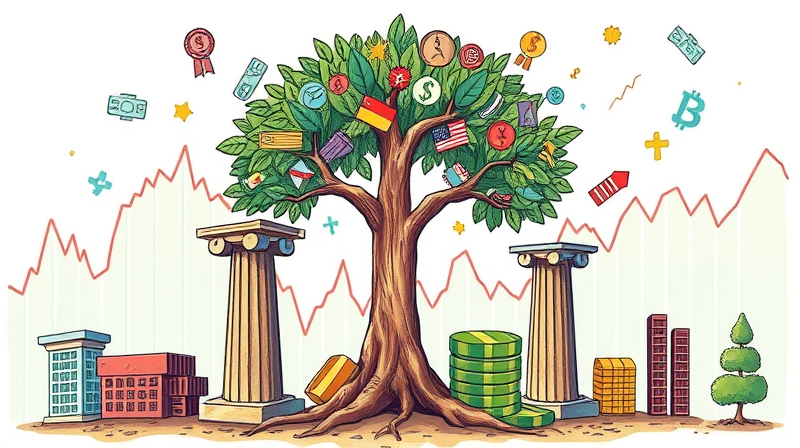
In an investment landscape often dominated by the volatility of equities, bonds offer a compelling alternative focused on capital preservation and steady income. Whether you’re saving for retirement, funding a child’s education, or simply seeking to diversify, bonds can provide a foundation of reliability. This in-depth guide will demystify bonds, explore current market trends, and offer practical strategies to help you integrate fixed-income securities into your portfolio with confidence.
Bonds are fixed-income investment products where you, the investor, lend money to a government, municipality, or corporation for a specified term. In return, the issuer makes periodic interest payments known as coupons and repays the bond’s face value at maturity. This structure contrasts with stocks, where investors own equity and partake in profits through dividends or share price appreciation.
Common examples include U.S. Treasury bonds backed by the full faith of the federal government, municipal bonds issued by states or cities often featuring tax benefits, and corporate bonds issued by companies with varying credit profiles. By understanding the basics of bond issuance and payment schedules, you can tailor your bond investments to match your financial goals and risk tolerance.
In a well-constructed portfolio, bonds bring unique advantages that complement equities and other asset classes. Investors often turn to bonds for income stability, risk management, and diversification benefits, especially during periods of stock market turbulence or economic uncertainty.
Bond offerings vary widely by issuer type, credit quality, and payment structure. Below is a snapshot of major bond categories and their recent market trends:
At its core, a bond pays a coupon based on its face value. For instance, a $1,000 bond with a 6% coupon delivers $60 in interest annually, typically split into semi-annual payments. Investors can hold the bond to maturity or trade it on secondary markets, though early sales introduce inverse relationship with interest rates risk, meaning bond prices fall when prevailing rates rise.
Credit quality plays a central role in determining yield. Highly rated issuers such as governments and blue-chip corporations borrow at lower rates, reflecting their lower default risk. Conversely, issuers with weaker credit profiles—often found in the high-yield or “junk” bond market—must offer higher coupons to attract investors. Liquidity also varies: U.S. Treasuries trade in massive volumes daily, while smaller municipal or corporate issues may be harder to buy or sell at favorable prices.
The bond landscape in mid-2025 has been shaped by persistently high treasury yields, shifting fiscal policies, and evolving inflation expectations. The benchmark 30-year U.S. Treasury yield climbed above 5% for the first time since 2007, driven by concerns over rising federal deficits and sustained consumer price increases. At the same time, global bond markets from Germany to Canada have witnessed parallel yield spikes, indicating a broader reassessment of sovereign debt risk.
Investors also anticipate a potential for sustained high yields through year-end, as the Federal Reserve signals only modest rate cuts beginning in the autumn—assuming growth decelerates and inflation trends downward. Meanwhile, the yield curve, which inverted during 2024, is showing signs of steepening, offering higher compensation for locking in longer maturities.
While bonds carry less price volatility than stocks, they still face distinct risks. Understanding these challenges is crucial for maintaining a resilient fixed-income allocation:
In portfolio construction, bonds serve as a stabilizer during equity downturns and a source of dependable cash flow. Historically, diversified portfolios mixing stocks and bonds have achieved smoother returns, with bonds shield against market downturns while equities pursue growth. The precise allocation depends on your risk tolerance, time horizon, and income requirements.
Conservative investors or those nearing retirement often adopt a 60/40 split—60% equities and 40% bonds—though more cautious allocations may tilt further into fixed income. Younger investors, on the other hand, may maintain a smaller bond allocation focused on duration-managed or inflation-protected securities, preserving growth potential while hedging against extreme volatility.
Bonds can also fulfill specialized roles beyond core portfolio diversification. Institutional investors frequently use bonds as collateral for margin loans, enabling leverage without liquidating long-term holdings. Parents saving for college often prefer bond ladders—buying bonds with staggered maturities—to align cash flows with tuition schedules.
Tax treatment varies significantly. Municipal bond interest is generally exempt from federal—and often state or local—taxes, making them highly attractive for high-income individuals. By contrast, interest from corporate and Treasury bonds is taxed at ordinary income rates. Investors should evaluate after-tax yields and consider municipal allocations in tax-sensitive accounts.
Looking ahead, the fixed-income environment is poised to remain attractive for disciplined investors. Broadly, government bond yields are expected to settle in the 4%–5% range, offering a meaningful income stream relative to recent decades. As inflationary pressures ease, credit spreads may normalize, potentially enhancing total returns for corporate and high-yield sectors.
Global bond markets could present opportunities as well. European and Canadian sovereign yields have lagged the U.S., but improving fiscal discipline and moderating inflation abroad may narrow gaps and provide compelling value trades. Ultimately, a flexible approach—balancing duration, credit quality, and geographic exposure—will help investors navigate uncertainties and capitalize on evolving market dynamics.
In an era of heightened market complexity, bonds remain a vital tool for achieving diversification benefits and reducing risk. By understanding bond mechanics, assessing current trends, and aligning fixed-income strategies with personal goals, investors can build a stable income-generating component that stands the test of time.
References













